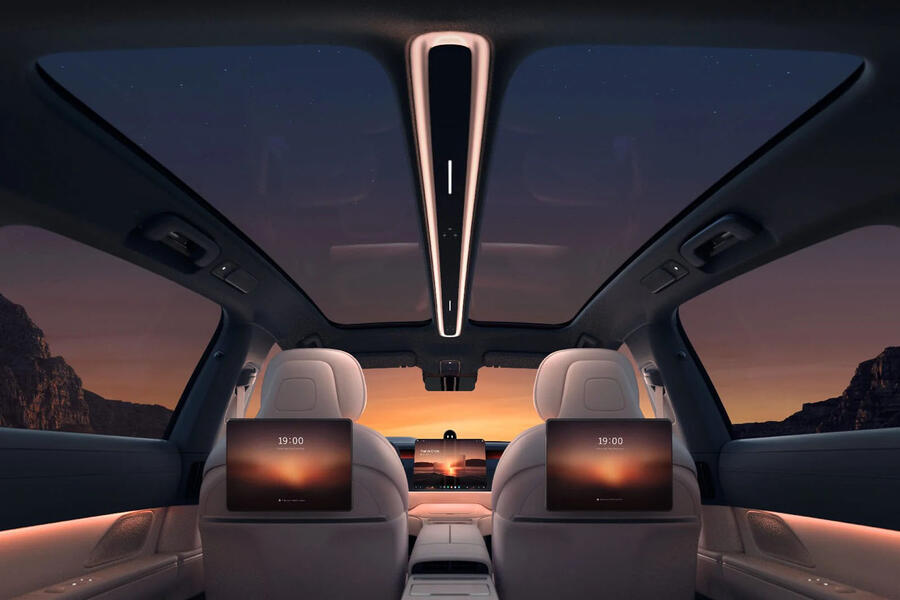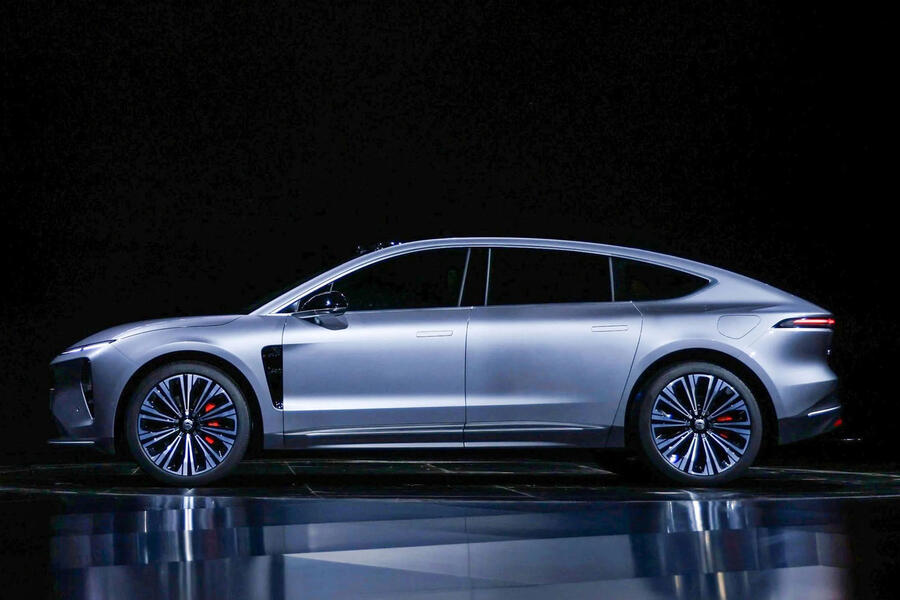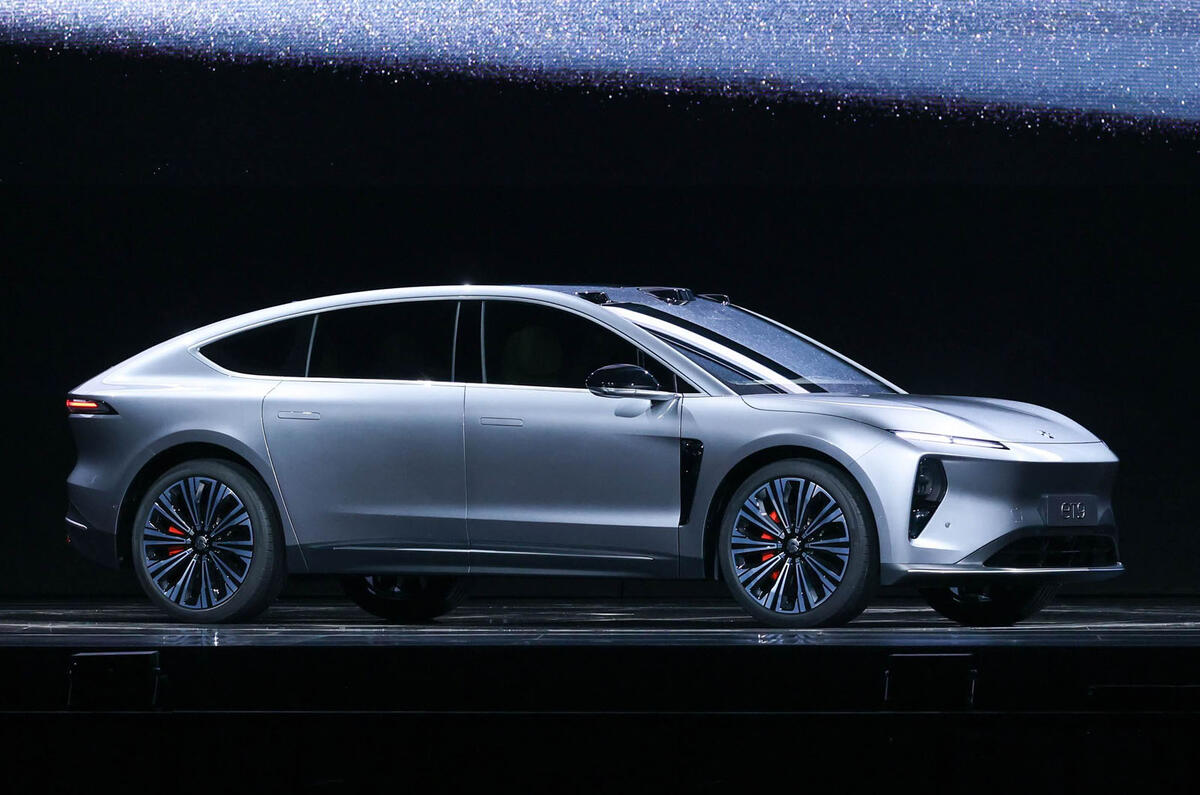Nio will rival Mercedes-Benz’s upmarket Maybach brand with the ET9, its new flagship coupe-crossover arriving in 2025.
The dual-motor four-wheel drive car acts as a technological showcase for Nio’s electric platform and drivetrain and sets new standards of efficiency, luxury, space and safety for production electric cars, said CEO William Li.
Launching in its home market at the start of 2025, the RMB800,000 (£88,800) ET9 is not only Nio’s most advanced but also its most expensive model to date.
It’s also its largest, too, with a length of over 5300mm, width of 2016mm and height of 1620mm making it over 199mm longer, 29mm wider and 115mm higher than the Nio ET7 saloon launched in 2022.
Riding on the largest version of Nio’s new ET3 electric car platform, it has an ultra-long wheelbase of 3250mm, some 190mm longer than that of the ET7 saloon.
During the presentation of the ET9 at the brand’s annual Nio Day in Xi’an, China, Li referenced the Mercedes-Maybach S-class, Audi A8, BMW 7-series and Porsche Panamera, providing an insight into the sort of luxury car competition the new Nio model is aiming to unseat.
Li describes the ET9 as a “landjet” – a term first coined by Audi for a futuristic electric concept unveiled in 2020. It combines the lines of a traditional saloon with those of a modern-day SUV and rides on wheels up to 23-inch in diameter, and with up to 200mm of ground clearance.
Inside, the bold crossover receives a luxurious cabin with seating for four in a two-plus-two layout. The rear seats have been developed specifically for the ET9 and offer 18-way electric adjustment together with a reclining function, giving a seat back angle as low as 45 degrees. A pair of 14.5-inch OLED are also attached to the rear of the front seats.

Li says the elevated seating combines with the high riding attributes to provide occupants with “a reassuring and calm experience” that is further enhanced by a full-length glass roof.
The interior is divided down the middle by a so-called executive bridge. It provides the rear seat occupants with fold-out tables and a 10-litre mini refrigerator. The rear also receives up to seven electric sunshades.
At the heart of the new four-seat crossover is a newly developed 900-volt electric architecture combined with a proprietary 1200v silicon carbide (SIC) power module. It permits battery charging at up to 600kW and peak charging curve of 765 amps – sufficient for a 159 mile top-up in electric energy in 5 minutes, according to Nio.
The adoption of the new electric architecture has seen Nio further reduce the size and weight of the electric motors and wiring harness in the ET9 compared to the existing 800-volt system used by the ET7.
Further developments incorporated on the big crossover include Nio’s new NX9031 AD chip set. The 5 nm, 32-core automotive grade processor has over 50 billion transistors and is claimed to be capable of running over 6 trillion commands per second at speeds 75 per cent faster than the automotive industry average, says Li. This allows concurrent processing for sensing, computing, planning and control.
Power for the ET9 is supplied by two newly developed electric motors. Included is what Nio describes as the world’s first 925-volt W-Pin motor. Capable of operating at up to 20,000rpm, it is mounted at the rear and develops up to 340kW. The front houses an induction motor with a power density of up to 2.6kW/kg and a peak output of 180kW.
Electric energy is provided by a swappable 120kW lithium-ion battery. It uses Nio’s new 46105 cylindrical cells and has a cell energy density of 292Wh/kg.

The new range-topping Nio model is fully compatible with the Shanghai-based company’s new fourth-generation Power Charger and Power Swap Station – the latter of which is claimed to support up to 23 batteries, a maximum of 480 battery swaps per day and operate 22 per cent faster than existing stations.
The technical advances brought to the ET9 extend to its newly developed chassis, which Nio says operates fully by-wire. The operation of the throttle, gear shift, steering, suspension and brakes are all controlled electronically instead of mechanically.
The ET9’s fully active SkyRide suspension system is claimed to be more advanced than that adopted by the third-generation Porsche Panamera, providing individual wheel control, wheel travel of up to 220mm and four-wheel steering.




Join the debate
Add your comment
There really is nothing new in car design at the moment, outside or in.
About as novel as a bag of frozen Peas.